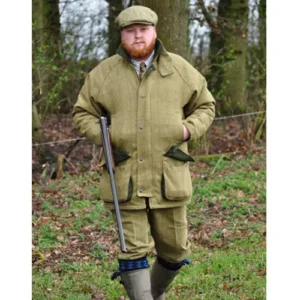As the cold weather sets in, it’s time to rethink your wardrobe and master the art of layering. Winter fashion isn’t just about piling on every warm piece you own — it’s about creating a functional yet stylish look that keeps you cozy, no matter how low the thermometer drops. Layering is the key to staying comfortable in fluctuating temperatures while also maintaining style. Here’s a guide to layering up for winter like a pro.
1. Start with a Base Layer: Keep Dry and Warm
The foundation of any good winter outfit starts with a solid base layer. The main purpose of this layer is to wick moisture away from your skin, keeping you dry and warm. Materials like merino wool or moisture-wicking synthetics like polyester or nylon are ideal.
Avoid cotton, as it traps moisture and can make you feel colder. A long-sleeve shirt or thermal top, along with thermal leggings or long underwear, should form your base. These layers are usually the thinnest, but they play a crucial role in regulating your body temperature.
Base Layer Essentials:
• Merino wool or moisture-wicking thermals
• Fitted but not restrictive (think snug, but with room to breathe)
• Lightweight, breathable fabrics
2. Add an Insulating Mid-Layer: The Cozy Factor
Next up is the insulating layer. This is where warmth really comes into play. The goal is to trap body heat without making you feel bulky. The key materials for this layer are fleece, down, or synthetic insulations.
A fleece jacket or a down vest is a great option here. Fleece offers warmth without much weight, while down is fantastic for extremely cold conditions, providing an unmatched warmth-to-weight ratio. For vegans or those allergic to down, synthetic alternatives like PrimaLoft offer similar warmth without the feathers.
Mid-Layer Essentials:
• Fleece jackets, wool sweaters, or down/synthetic vests
• Fitted, but slightly roomier than your base layer to allow for air circulation
• Insulating materials that trap heat efficiently
3. Top It Off with a Protective Outer Layer
Your outer layer is your shield against the elements. This is where you protect yourself from wind, rain, and snow. A good winter jacket or coat is essential, and you’ll want something that’s both weather-resistant and insulating.
Look for jackets that are water-resistant or waterproof, with sealed seams, and breathable fabrics. For extremely cold conditions, consider something with down insulation or synthetic alternatives that maintain warmth even when wet. Popular choices include parkas, puffer jackets, or wool coats lined with a weather-resistant shell.
Outer Layer Essentials:
• Waterproof and windproof coat or jacket
• Consider a longer coat (to cover your hips or thighs) for extra warmth
• Features like a hood, adjustable cuffs, and zippers for added functionality
4. Accessorize for Extra Warmth
No winter look is complete without accessories to provide additional warmth and protection from the cold. Hats, scarves, gloves, and socks may seem like minor details, but they play an essential role in keeping you comfortable.
A knit hat or beanie will keep your head warm, while a wool scarf wrapped around your neck offers extra insulation. Opt for mittens over gloves for maximum warmth, and don’t forget thick wool or thermal socks to keep your feet toasty. If you’re spending a lot of time outdoors, consider investing in heated gloves or insoles for added warmth.
Accessory Essentials:
• Wool or knit hats to keep your head warm
• Thick scarves, preferably wool or fleece
• Thermal socks and insulated gloves or mittens
• Neck gaiters or balaclavas for extra face protection
5. Layering Tips for Maximum Comfort and Style
• Play with textures: Don’t be afraid to mix different materials in your layers. A fleece jacket with a sleek waterproof coat can look stylish and functional.
• Fit is key: Each layer should fit well, not too tight but not too loose. This allows for airflow and ensures that the heat you generate doesn’t escape.
• Color coordination: Winter doesn’t have to be all about dark hues. Play with textures and colors to add personality to your outfit. Layer neutrals with pops of color or patterns for visual interest.
• Consider your activity level: If you plan to be active outside, like hiking or skiing, opt for layers that are breathable and moisture-wicking, so you don’t get too hot and sweaty.
6. Don’t Forget About Your Feet
The final layer of winter warmth often starts at your feet. A solid pair of waterproof boots lined with warm materials (like faux fur or sheepskin) will keep your feet dry and comfortable in snowy conditions. Don’t forget to wear moisture-wicking socks to prevent any cold-induced discomfort.
Footwear Essentials:
• Waterproof boots with thermal insulation
• Moisture-wicking, thick socks (avoid cotton)
Conclusion
Layering up for winter isn’t just about warmth — it’s about staying comfortable, dry, and stylish in cold weather. By starting with a moisture-wicking base, adding an insulating mid-layer, and finishing off with a protective outer layer, you’ll be ready to face whatever winter throws your way. Don’t forget to add the right accessories and footwear to complete your look.
With these layering strategies, you’ll be able to enjoy the winter months without compromising on warmth or style. Stay cozy, stay dry, and most importantly, stay fashionable!



